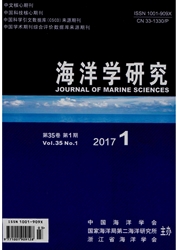

 中文摘要:
中文摘要:
ATP是生物体内的重要化合物,可用于估算微型生物的生物量,因此它在生态系统食物链和能量流动研究中具有重要意义。根据ATP与荧光素反应产生荧光的原理,可对微型生物细胞内的ATP进行测定。荧光法测定微型生物细胞内ATP灵敏度高、操作简便快捷。本文从样品处理、ATP提取、ATP测定、干扰因素及应用等几个方面介绍了荧光法测定微生物细胞内ATP的技术,评述了这些技术的优缺点和适用范围,总结了ATP提取和测定时可能存在的干扰因素及其采取的相应对笫。
 英文摘要:
英文摘要:
ATP, as one of essential compounds of living organisms, can be used to estimate microbial biomass, and plays an important part in food chain and energy circulation. All the procedures for measuring environmental ATP can be conveniently divided into three equally important analytical aspects: 1) sampling, 2) extraction and 3) analysis. Currently, quantitative measurements of intracellular ATP are accurate only if the concentration remains constant throughout the sampling period. After sampling, either aqueous environmental samples or sediment samples should be extracted as soon as possible. Numerous methods are available for the extraction of ATP from microbial cells. Media for the initial extraction may be divided into the following categories: boiling aqueous buffers, inorganic acids and bases, organic solvents. Generally, no single extraction method can be regarded as universally acceptable one. Nevertheless, some comments were made concerning the extraction of ATP in this paper. Presently, the firefly bioluminescence assay for ATP is the most widely accepted method for ecological studies because of its sensitivity and reproducibility. This paper also refers some negative factors such as ion, absorption and nonliving organic and inorganic materials (dissolved ATP), Some current methods to prevent and eliminate those negative factors are introduced. In addition, this paper illustrates some applications of ATP measurement by fluorescence assay in recent years.
 同期刊论文项目
同期刊论文项目
 同项目期刊论文
同项目期刊论文
 期刊信息
期刊信息
